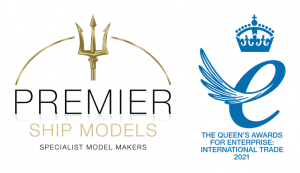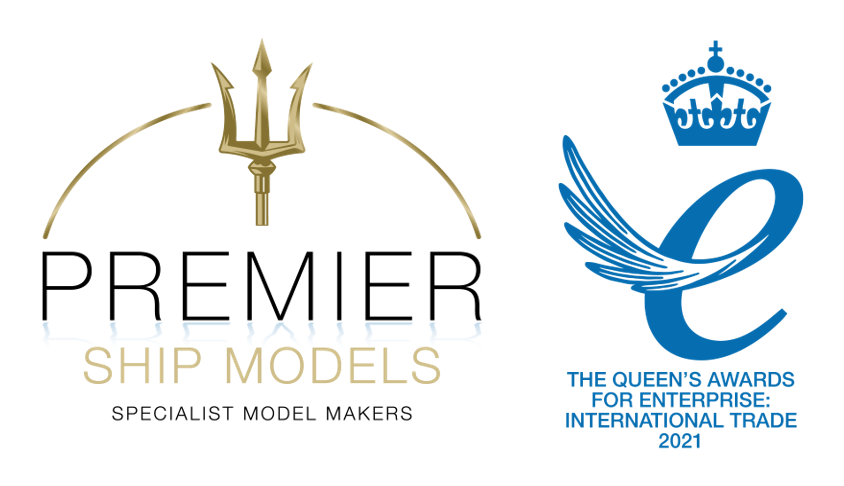Back in 2017, Premier Ship Models was contacted by British Petroleum, more commonly referred to as BP. They had just launched their Glen Lyon FPSO, and wanted two dioramas and ten mini-models. In the maritime industry, FPSO refers to a floating production storage and offloading vessel. This is a vessel wherein oil will be processed and stored safely until it can be transferred to an oil tanker.
The purpose of the Glen Lyon was to serve as the main hub for the 450-million-barrel Quad204 development in the North Sea. It would redevelop the Schiehallion and Loyal fields, subsequently prolonging production to 2035 and maybe even beyond then.
BP is a world-renowned oil and gas company, based in London. It’s regarded as an oil and gas ‘supermajor,’ as well as one of the world’s biggest companies in terms of revenues and profits. BP also features in the FTSE 100, reflecting the company’s enormous success.
The company was founded in 1908, with its origins dating back to the creation of the Anglo-Persian Oil Company. It was established as a subsidiary of Burmah Oil Company, and then in 1935 it became the Anglo-Iranian Oil Company, before finally adopting the name British Petroleum in 1954. It wasn’t until 1998 that British Petroleum merged with Amoco, an American chemical and oil company, and the two quickly became BP Amoco plc. In 2001, the name of the company was shortened to BP p.l.c., and from 2003 to 2013 BP was a partner in the TNK-BP joint venture in Russia. Between 2013 and 2022, BP held almost 20% stake in Rosneft, a Russian oil company, before Russia’s invasion of Ukraine.
In 2018, BP were operating in almost 80 countries, and were producing approximately 3.7 million barrels of oil every single day. BP also has around 19,000 petrol stations all over the world, under the name of BP in the UK and most countries, Amoco in the US, and Aral in Germany.
Whilst the company has received a lot of criticism over the years (like many oil and gas companies), one area where BP excels is its recognition of the LGBTQ community. In 2014, BP supported a global study looking into the challenges that lesbian, gay, bisexual and transgender employees faced. They subsequently began advocating for change, and in 2016 BP was “among the first major companies in the US to offer LGBT workers equal protection and benefits roughly 20 years ago” according to an article written in the Houston Chronicle. The Human Rights Campaign’s Corporate Equality Index was launched in 2017, and BP scored 100% in 2018. Furthermore, they were listed in the top 100 employers for lesbian, gay, bisexual and transgender staff on the 2017 Stonewall Workplace Equality Index.
Premier Ship Models were asked to create two dioramas of the Glen Lyon FPSO, as well as ten miniature models, with one to be for the former BP Chief Executive Officer, Bob Dudley. One diorama was to go to BP’s London office, with the other going to their headquarters in Aberdeen.
We hadn’t really been tasked with something of this level at this point in time, and so the challenge was both daunting and exciting. However, we knew we had to make extensive research as we always had done, guaranteeing the best possible level of accuracy for the models.
Both dioramas were complete with display cases and bases, as well as a visual representation of the materials the Glen Lyon would be drilling from the seabed. Once more, this wasn’t really something we were familiar with at the time, and so the research conducted needed to be precise.
Frequently liaising with the client also allowed us to learn more, and maintain a consistent level of transparency with every step of the project. Both dioramas and the ten models were made to fit their exact needs and requirements. This refers to specifications such as colour schemes, structures and general measurements. As previously stated, the frequent levels of communication also allowed the client to see the progress of their order.
The dioramas and ten mini-models were all made in the UK. Everything was 3D-printed, before being painted by hand.
There are two core stages of 3D-printing; presentation and production. Presentation involves researching the ships themselves, liaising with the client and then creating renders for said client to review. Production is the actual printing and subsequent construction of the unit as an entirety.
Each of the mini-models measured in at 25 centimetres in length, 5 centimetres in width and 12 centimetres in height. This meant they were at a scale of 1 to 1000.
To ensure the highest level of accuracy, we followed the specifications of the ship itself, and simply scaled everything down. This is all initially done digitally. Our 3D-modeller creates a digital render, which will be complete with colour, decals, logos, and other features such as funnels and whatnot.
After this, the digital render will be presented to the client, and if they’re happy to proceed, printing can commence. The render will actually be divided into pieces, before being put together by hand. This is to ensure everything is of the correct scale, and if there is a mistake, less material will go to waste.
Each piece requires support, and so every chunk is printed attached with its own scaffolding, in a lattice-like structure. These are located on specific parts of the units where they won’t be seen in the end product, and can be easily detached without ruining the models themselves in any way.
After each piece has been joined with various solutions and resin, the model will have to be left to dry, before it can be painted by hand. In this case, we had ten miniature models and two dioramas, and so multiple pieces and models were being printed and built in sync with each other to save time.
Once they’re painted, and complete with smaller features, they can be transported to the client. The dioramas took a little bit longer due to the attachments, display cases, bases, and seabed features.
BP were thrilled with the end result of both dioramas and the ten mini-models. The quality was sublime, and everything was delivered on time.
We always knew this project would offer its challenges, simply due to the status of the client, as well as the fact that we hadn’t done anything to this scale before, but we were mostly satisfied with the degree of our work.
Unfortunately, we did encounter one issue. There was a small wiring issue with the diorama that was delivered to Aberdeen, as the lights weren’t working. Premier Ship Models ventured up to Aberdeen from London to fix this. BP were impressed with our excellent post-client care, and they were extremely happy with the end result of the project.
Commission your own model
If you would like to have your own bespoke model built, please complete the contact form below.


